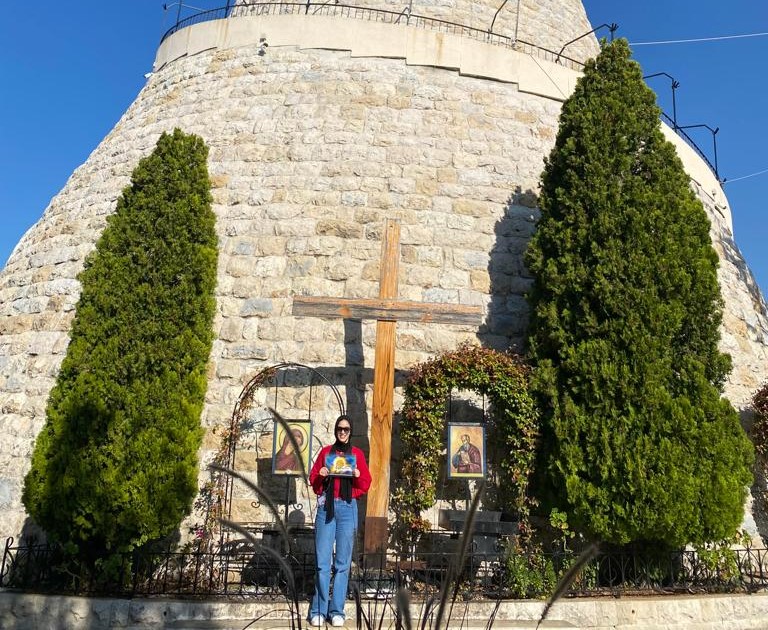Notre Dame du Liban also known as Our Lady of Lebanon is a Marian shrine and a pilgrimage site in the village of Harissa in Lebanon.
The Statue of Our Lady of Lebanon is a French-made, 13-ton statue, made of bronze and painted white, of the Virgin Mary. It was erected in 1907 on top of a hill, 650 meters above sea level, in the village of Harissa, 20 km north of Beirut in honor of Our Lady of Lebanon. The land was donated by Yousef Khazen. It was made up of seven sections that were assembled on top of the stone base, which had a bottom perimeter of 64m, an upper perimeter of 12m and with an overall height of 20m. The height of the statue is 8.50m while its diameter is 5.50m. The statue and the shrine were inaugurated in 1908, and it has become a major pilgrimage destination.
The shrine belongs to the Maronite Patriarchate who entrusted its administration to the Congregation of Maronite Lebanese Missionaries since its foundation in 1904 and also to the jesuit Lucien Cattin, according to Christian Taoutel (Lebanese historian from the Saint Joseph University). It is one of the most important shrines in the world honoring Mary, Mother of Jesus. The shrine is highlighted by a huge, 15-ton bronze statue. It is 8.5 m high, and has a diameter of five meters. The Virgin Mary stretches her hands towards Beirut.
The Shrine of Our Lady of Lebanon draws millions of faithful both Christians and Muslims from all over the world. The 50th jubilee in 1954 was also the hundredth anniversary of the establishment of the Catholic dogma of the Immaculate Conception. During these celebrations, Pope Pius XII sent his representative, Cardinal Angelo Roncalli (later to become Pope John XXIII) to Lebanon. Pope John Paul II visited Our Lady of Lebanon in 1997.
The Congregation of Maronite Lebanese Missionaries, responsible for the administration, works at reinforcing relations among all local Churches, Christian communities and apostolic movements.
The Lebanese Christians as well as the Druze and Muslims have a special devotion to Mary, Mother of Jesus. The Maronite Patriarch of Antioch named her the "Queen of Lebanon" in 1908 upon completion of the shrine. Overlooking the bay of Jounieh, the shrine has become a major tourist attraction where tourists take the gondola lift, the Téléphérique, from the city of Jounieh to Harissa.





 And then Add to Home Screen.
And then Add to Home Screen.